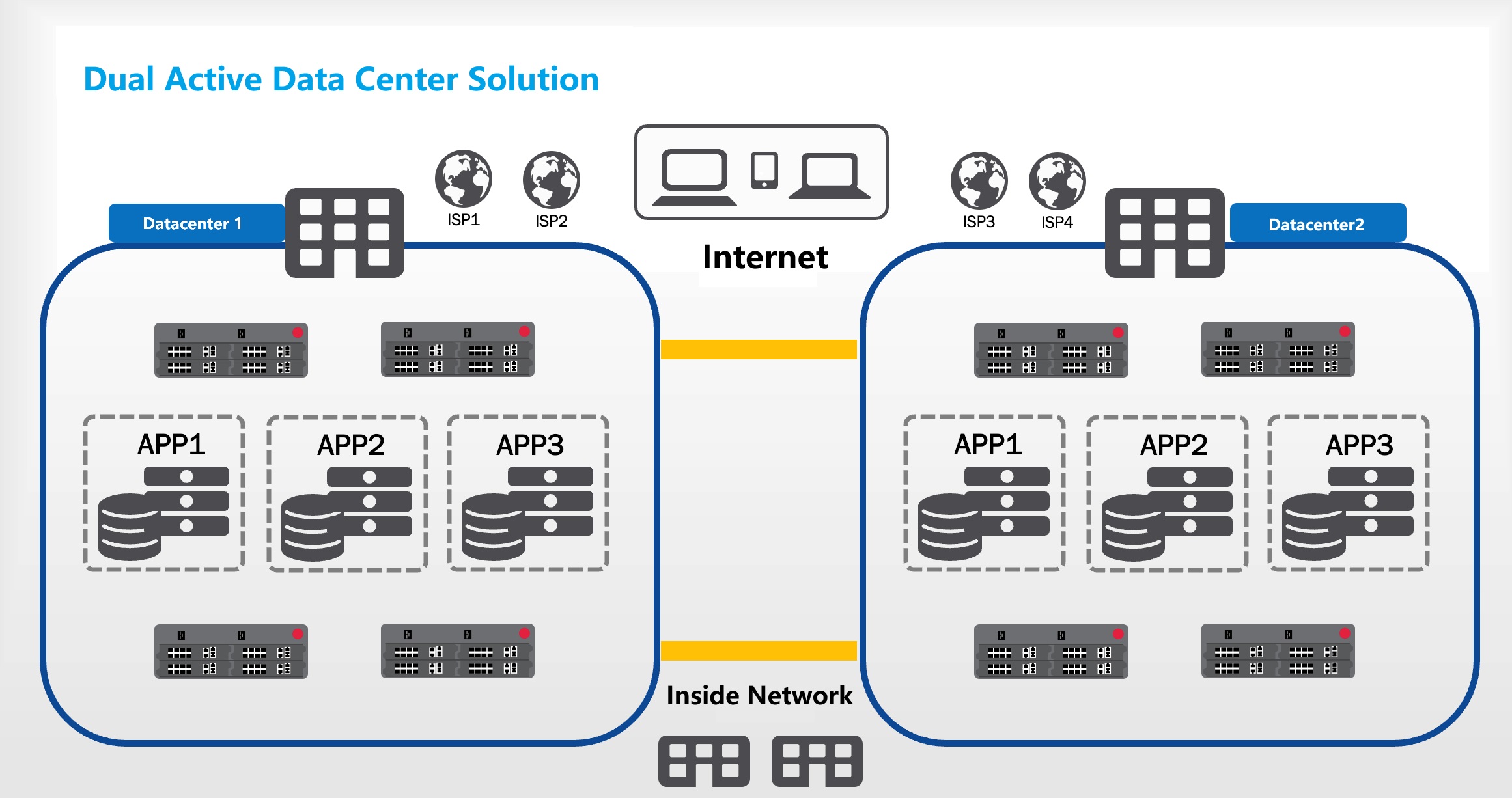Core Value
The active-active data center aims to provide enterprises with highly reliable and highly available data storage and application services to ensure business continuity and data security. By building real-time data synchronization and load balancing between two or more data centers, it enables seamless switching of data and application services, significantly enhancing an enterprise's ability to withstand disaster risks.

Technical Features
- Real-Time Data Synchronization: Through database synchronization and Layer 2 network architecture, real-time data synchronization between data centers is achieved, ensuring data consistency and business continuity.
- Load Balancing and Intelligent Scheduling: Based on intelligent load balancing technology, application access is optimized in real-time to ensure efficient resource utilization across data centers.
- High-Availability Cluster Technology: Cluster architecture ensures that a failure of any node in the data center does not affect the overall service operation.
- Automatic Failover: In the event of an abnormality, the system can automatically and seamlessly switch to another data center, ensuring uninterrupted business operations.
Application Scenarios
- Financial Services: Ensures the continuity of key operations for banks, securities firms, and other financial institutions to prevent data disasters.
- Internet Business: Supports stable operation of online platforms under high traffic and concurrency, providing uninterrupted customer service.
- Pharmaceutical Manufacturing: Ensures the continuity of critical systems such as MES in factories, supporting uninterrupted production.
- Healthcare Industry: Provides real-time assurance for the stability and continuity of hospital infrastructure and HIS systems.
Business Advantages
- High Reliability: Greatly reduces the risk of business interruption and ensures stable operation.
- Flexible Scalability: The active-active architecture supports elastic resource expansion, allowing flexible adjustments based on business needs.
- Enhanced Data Security: Ensures the safety of critical data and prevents data loss caused by disasters.
- Business Continuity Assurance: In any disaster scenario, rapid recovery and seamless service switching are achieved, ensuring service quality and user experience.